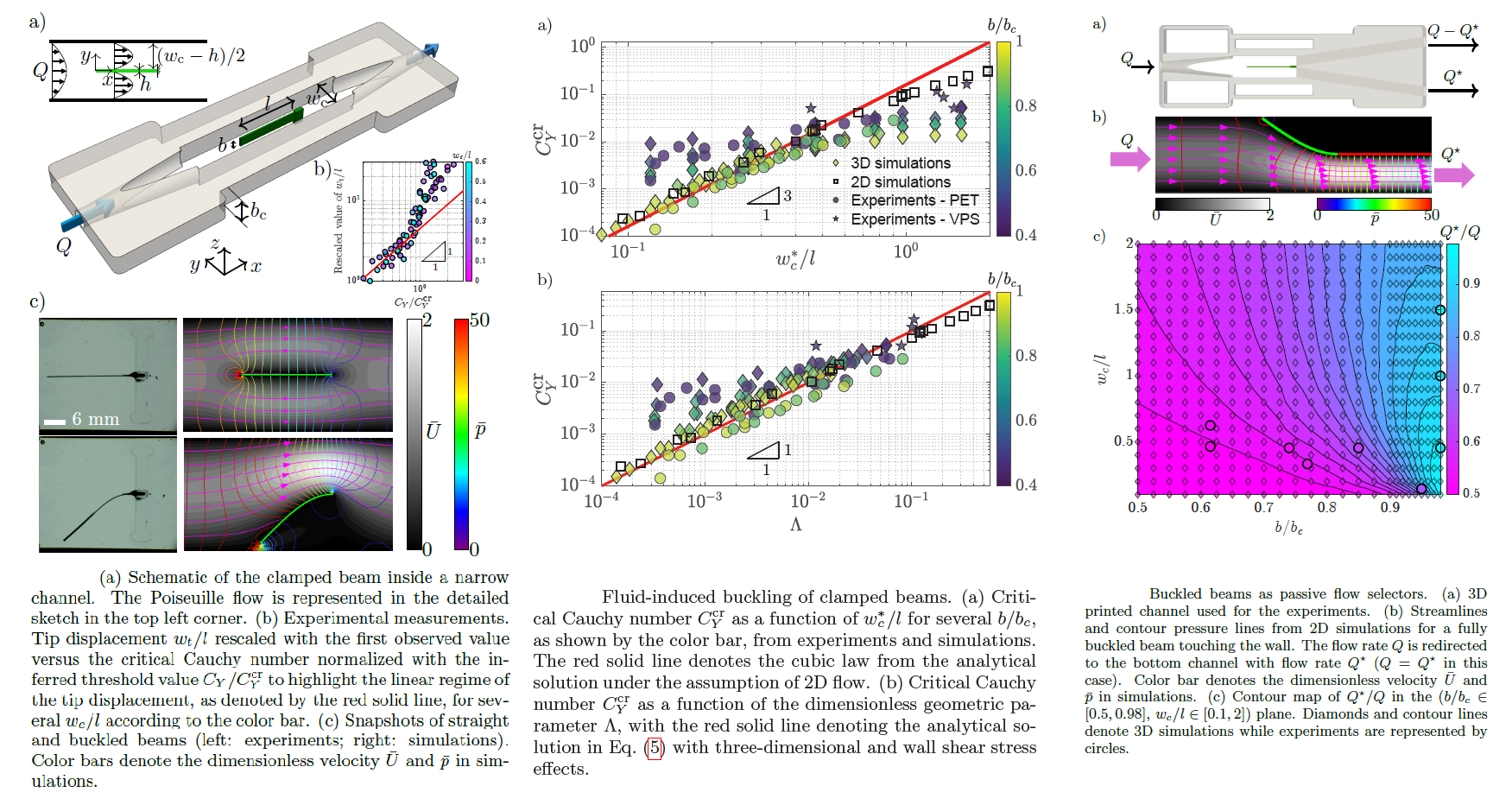Soft Hydraulics: passive flow selectors
The efficient control and redistribution of fluid flow are essential in both biological systems and engineered structures, such as the human cardiovascular system, plant vascular networks, and soft robots. For example, the human cardiovascular system expertly manages blood flow through the body using the heart and a network of valves, while plants passively regulate water and nutrient transport without a nervous system or external forces. Inspired by these natural systems, engineers have developed microfluidic devices with passive valves to perform tasks like cell manipulation, fluid mixing, and chemical reactions. This has given rise to the field of soft hydraulics, where the flexibility of valves and channels as well as the interaction and transport with between different phases (e.g. air bubbles) is utilized to achieve innovative functionalities. For instance, fluidic diodes, which allow one-way fluid flow, and flow regulators, which maintain consistent flow rates, have been developed and are crucial in various applications, such as micro-pumps and drug delivery systems. Research has also focused on how flexible structures like fibers and sheets behave in fluidic environments. In our case, we considered a simple prototype of passive flow selector: as the flow rate increases above a certain threshold, a beam bends on one side occluding one half of the channel and allowing transport only in the other one. We analytically quantified the instability threshold and found a very good agreement with precision experiments and multiphysics numerical simulations. We finally showed how to tailor the geometry of the beam so that the passive flow selector can also tune the ratio between the flow rates within the channels. This device and possible improvements would expand the range of passive valves available and improve our understanding of the behavior of flexible elements in microfluidic systems, with potential applications in more efficient fluid control systems and advanced diagnostic technologies, as well as in the fundamental understanding in the behavior of soft fibers in microfluidic channels for technological and biomedical applications.
